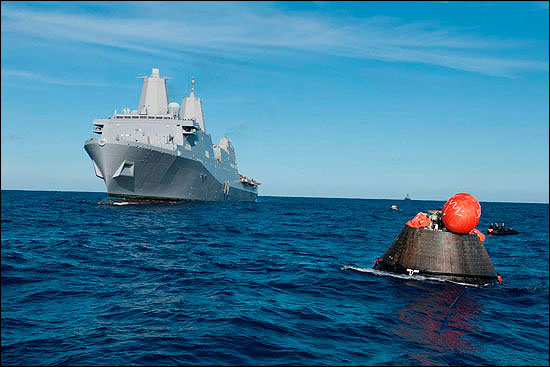
This is the first in our new series of articles about the history of memorial spaceflights.
NASA marked a major milestone in December 2014 as its new Orion spacecraft completed its first voyage to space, orbiting Earth and traveling farther than any spacecraft designed for astronauts has been in more than 40 years.
Although NASA described the December 2014 mission as an “uncrewed test,” there was actually a crew of one on board. A portion of the cremated remains of Patrick O’Malley flew on the 4 1/2 hour spaceflight. O’Malley, a 37-year-old aeronautical engineer, had worked on the Orion program for over a decade. After he passed away as a result of an undiagnosed brain illness, his co-workers at Lockheed Martin requested that a part of his cremated remains fly on this historic NASA mission. His family supported the idea: both of his parents and his two daughters attended the launch.
As a memorial spaceflight, this Orion mission resembled a cross between Celestis’ Earth Orbit and Earth Rise service missions. Like the next Celestis Earth Orbit mission scheduled for the fourth quarter of 2015, the Orion spacecraft launched from Cape Canaveral, Florida and orbited our home planet. But like the next Celestis Earth Rise mission scheduled for liftoff in November 2015, the Orion capsule returned O’Malley’s cremated remains to Earth.
NASA rarely launches cremated remains into space. Indeed, this was only the fourth NASA mission to do so. We’ll discuss the other three NASA missions in future blog articles about the history of memorial spaceflight.

Orion blazed into the morning sky of December 5, 2014 at 7:05 a.m. EST, lifting off from Space Launch Complex 37 at Cape Canaveral Air Force Station in Florida. The Orion crew module splashed down in the Pacific Ocean, 600 miles southwest of San Diego.
